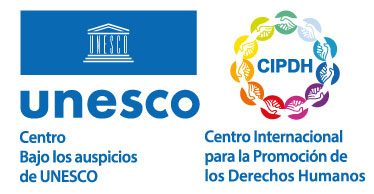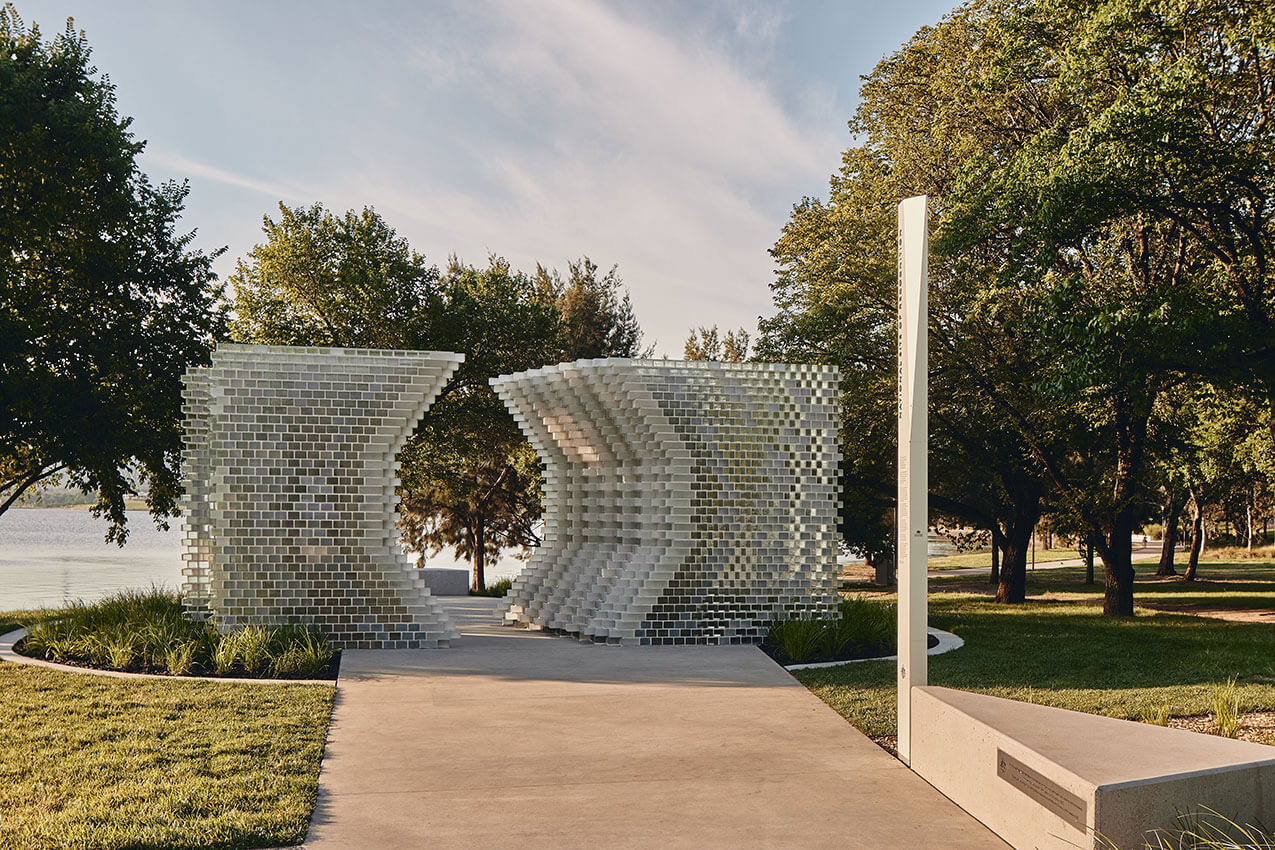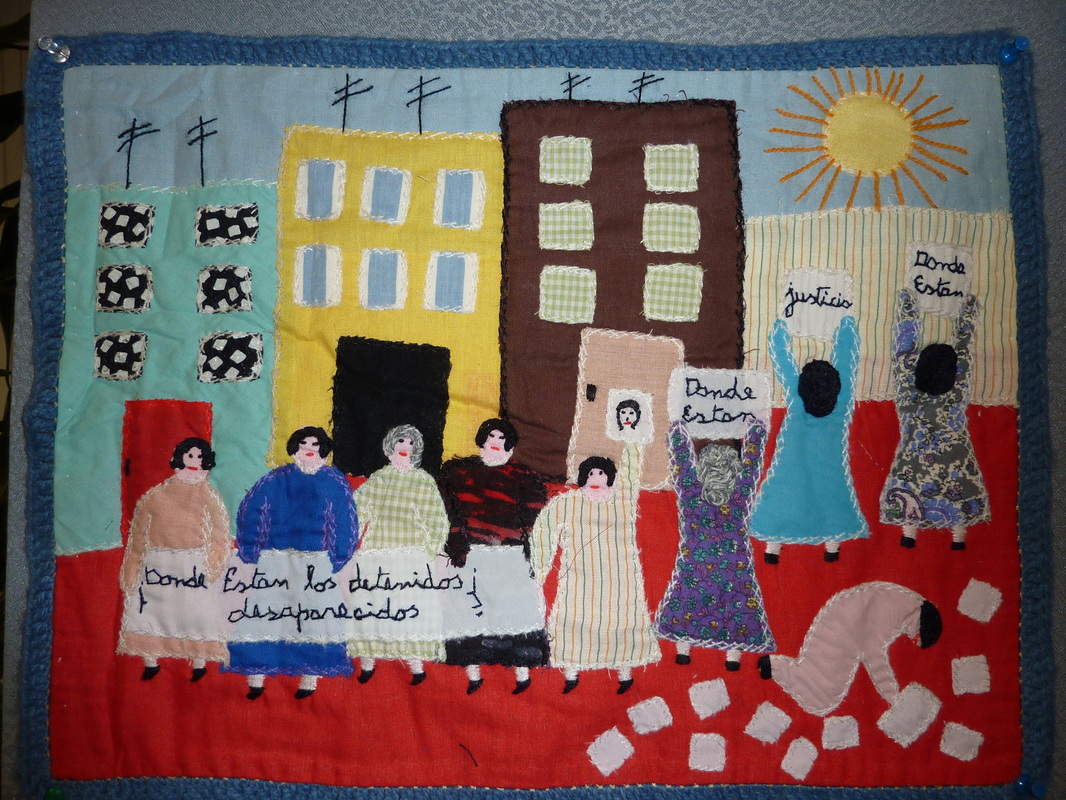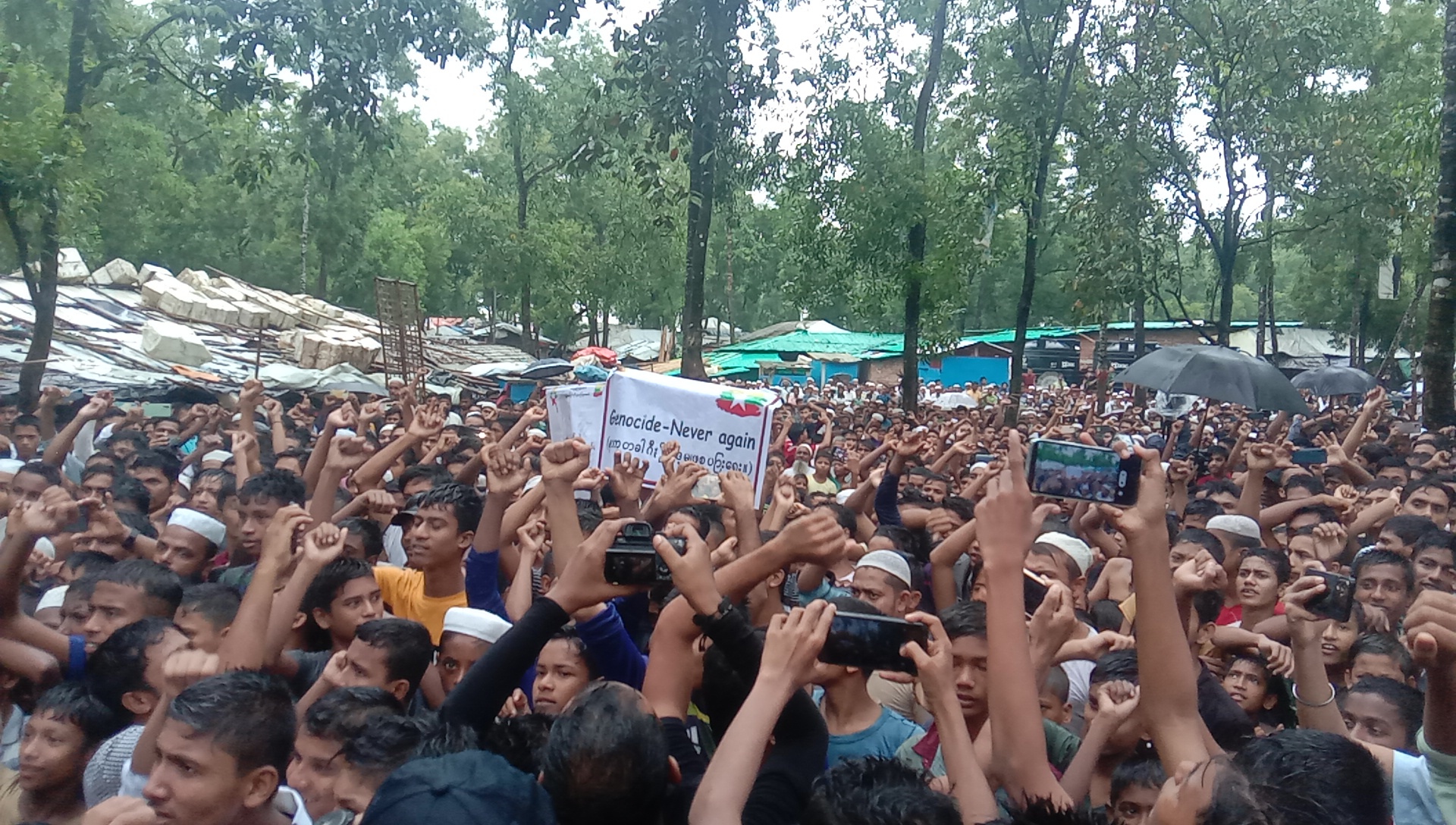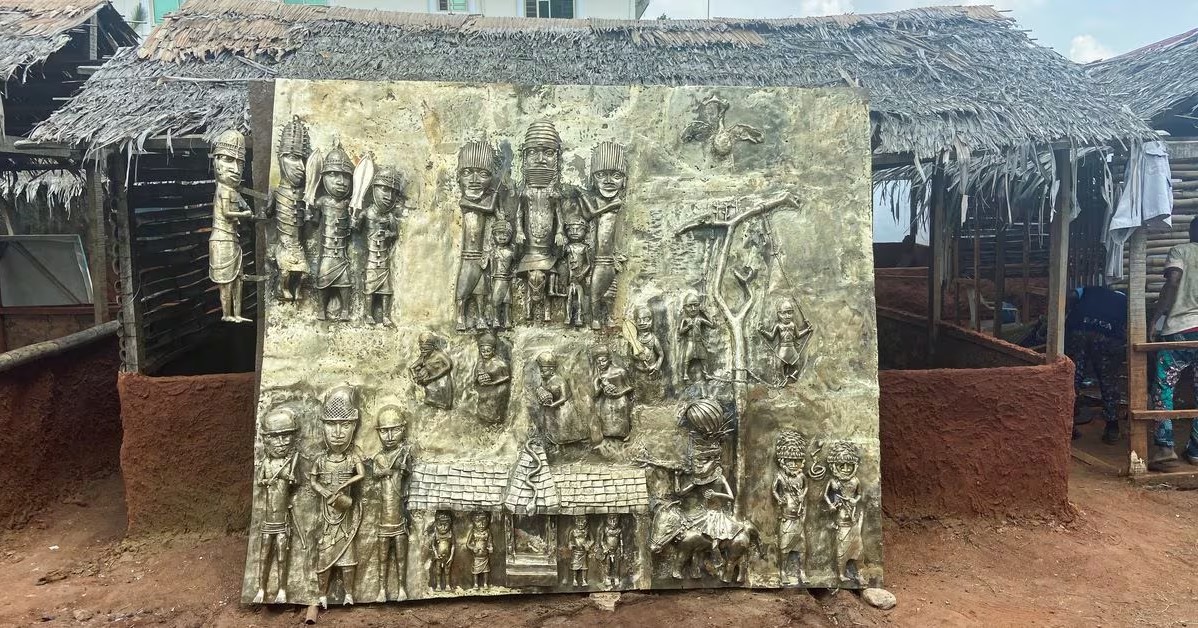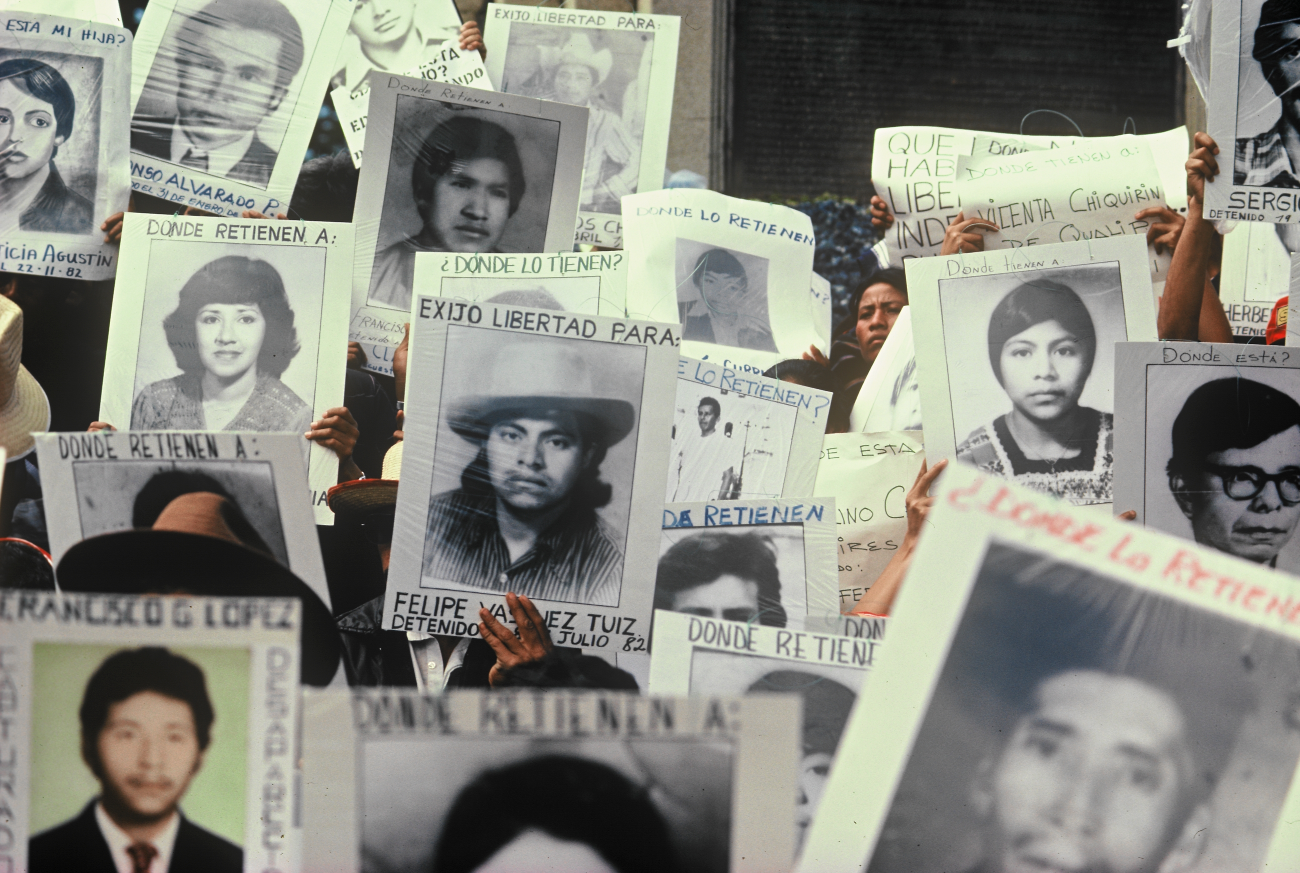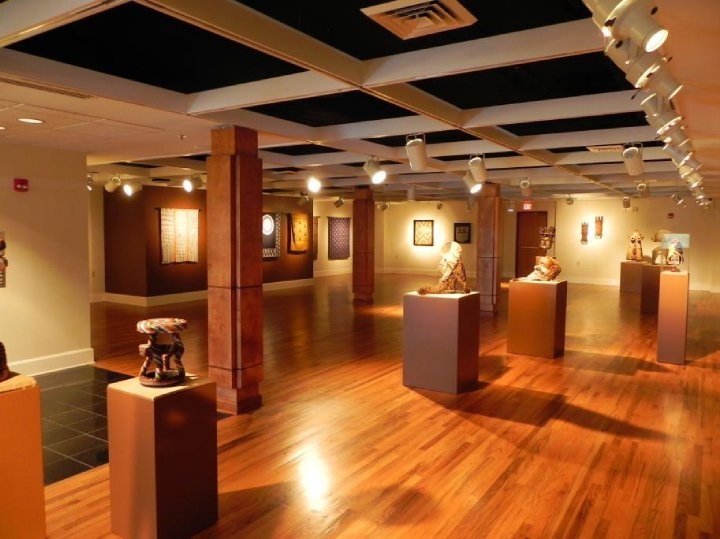From the sky they saw them coming | Monument to the victims of the Plaza de Mayo bombing
Artistic heritage
Theme: Genocide and/or Mass Crimes
Theme: Political persecution

Address
Colón Park, gardens of the Government House of the Republic of Argentina
Country
Argentina
City
Buenos Aires
Continent
America
Theme: Genocide and/or Mass Crimes
Theme: Political persecution
Purpose of Memory
To pay tribute to each of the 308 identified victims of the bombing of Plaza de Mayo on June 16, 1955, as well as to the as of yet unknown number of unidentified victims and the more than 1,200 people wounded by the attack.
Known Designation
From the sky they saw them coming
Institutional Designation
Monument to the victims of the Plaza de Mayo bombing
Public Access
Free
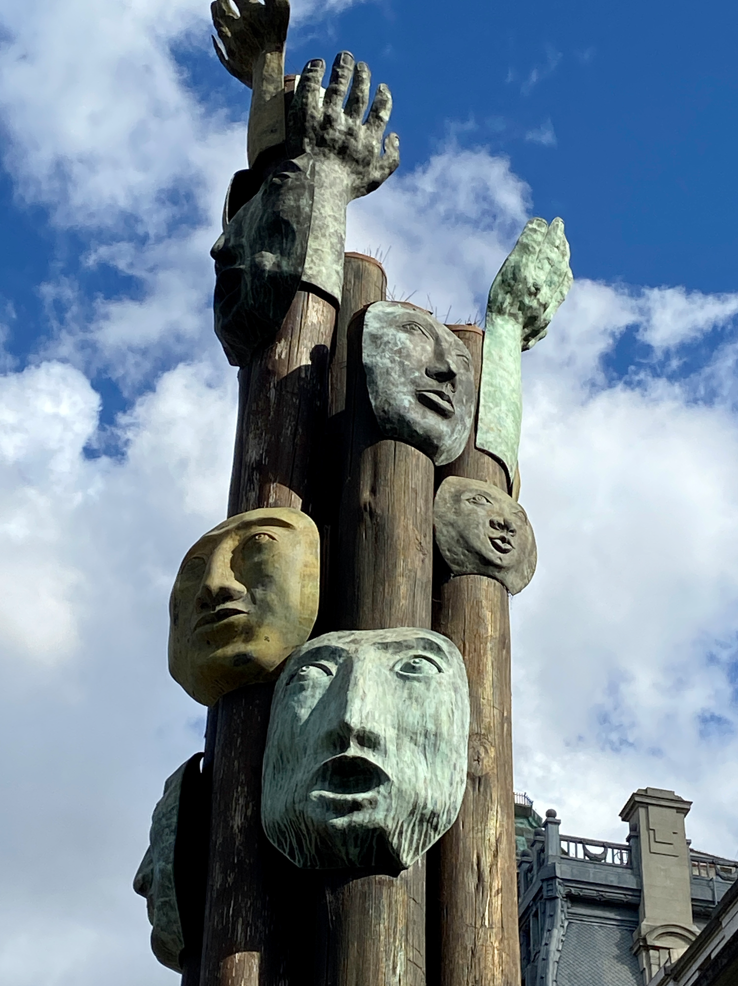
Location description
The monument consists of a totem-like vertical construction formed by six vitrified palm trunks of different heights (between six and seven meters) joined by a stainless steel strip at the spectators’ eye level. This strip is held by bolts and contains the engraved legend “Homage to the victims of the bombing of Plaza de Mayo on June 16, 1955. ‘From the sky they saw them coming'”, next to the names of all those who died in the bombing who have been identified so far, with a blank space foreseeing the addition of more names in the future. The monument is crowned by twelve bronze masks, featuring three male, three female and three children’s faces, all expressionless, and three faces representing, in the words of author Nora Patrich, “horror, with their mouths open in a tremendous, heart-rending groan of dread.” In addition, three bronze arms with their open hands pointing their palms to the sky “implore or try to protect, depending on the viewer”.
On June 16, 1955, the Argentine Navy, with the support of sectors of the Argentine Air Force, led an attack whose main objective was to assassinate President Juan Domingo Perón and the members of his cabinet in order to consummate a coup d’état. The maneuver also included the aggression against civilians who might rise up in defense of the constitutional government. The ulterior purpose of the attack was to establish a civilian triumvirate made up of leaders of the political forces opposed to the government.
The airplanes that flew over downtown Buenos Aires dropped more than one hundred bombs with a total of 9 to 14 tons of explosives. Most of them fell on the squares of Mayo and Colón, and on the strip of land that goes from the Ministry of the Army and the Government House to the Secretariat of Communications and the Ministry of the Navy, in downtown Buenos Aires. Twelve of the more than three hundred fatalities were inside the Government House, which was hit by twenty-nine bombs, six of which did not explode. The rest of the bombs and large caliber projectiles fired from the airplanes and also by the Marines who tried to storm the Casa Rosada were aimed at the civilian population.
The air raid was carried out in successive waves between 12:40 and 17:40. The Casa Rosada, the Plaza de Mayo and its surroundings (where the greatest number of victims was registered), the Central Police Department, the building of the General Confederation of Labor and the presidential residence were the main targets. In addition to the more than three hundred dead, the attack left more than twelve hundred wounded. Three hundred armed civilians (called “civilian commandos”) intervened in collateral actions such as the occupation of the studios of Radio Mitre, through which a proclamation that Perón was dead was launched. The president had retired to the Army Ministry, so he was not in the government house at the beginning of the attacks.
The bombing of Plaza de Mayo was the first air attack against ground targets carried out by the Argentine air forces, both Air Force and Naval Aviation, as well as a direct antecedent of the self-styled “Revolución Libertadora” (1955-1958), a civil-military dictatorship that came to power three months after the attack by means of a coup d’état that deposed Perón from the presidency. Some of the protagonists of the bombing, such as frigate captains Emilio Eduardo Massera, Horacio Mayorga and Oscar Montes, and several of the pilots and aircrew members who fled the country after the attack would later be accused of crimes against humanity during the last civil-military dictatorship (1976-1983).
In 2005, forty years after the events, the Secretariat of Human Rights of Argentina (SDH) initiated the first official investigation on the attack of June 16, 1955. On this anniversary and also with the impulse of the Legislature of the Autonomous City of Buenos Aires (CABA) different commemorative projects were presented. One of these was stated in Resolution Project 00453/2005, where at the request of Congressman Milcíades Peña a special Commission would be created within the scope of the CABA with the aim of paying homage to the victims of that massacre through commemorative activities to be carried out between June 13 and 17, 2005, in addition to a sculptural work and a commemorative plaque.
Two other projects were intended to place respective monuments to the victims: one presented by national senator Graciela Bar (Bill S-1775/07) which passed through three commissions (Education, Culture, Science and Technology, in the first instance, Budget and Finance, and finally Education and Culture) before being definitively filed and losing parliamentary status on June 26, 2009; the other also originated in the Buenos Aires Legislature (Bill 03216/2006) and was articulated with the initiative of the National Secretariat of Human Rights “Del cielo los vieron llegar” (“From the sky they saw them coming” in English).
The monument is the work of Argentine plastic artist and sculptor Nora Patrich (Buenos Aires, 1952) based on the proposal of one of the bombing of Plaza de Mayo victims’ daughter, Liliana Bacalja, who first approached the Legislature and the National Executive Branch with the project to place a memorial to commemorate the victims. Bacalja elaborated the proposal together with Patrich and Daniela Marino, lawyer and president of the Commission of Relatives and Survivors of the Bombing.
According to Patrich, the work has several references to the facts related to the bombing in its structure and conception: the vertical direction of the trunks, in the form of a totem from the earth to the sky, as were the effects of the explosion and aggression suffered from the planes; also, the trunks are trees that were alive and are now dead, symbolizing the way in which different lives were cut short by the attackers. The artist emphasizes that the use of stainless steel has its origin in being the same cold material from which the airplanes that left their mark of death and terror were made, while in the monument the human beings leave their mark on the metal, since the names of all the victims known to date are engraved on that strip. The design foresees the possible incorporation of new victims’ names, whose identities can be rescued from oblivion in the future. The steel is buckled to the trunks, imitating the effect of bullets that hold it to the wood, while the choice of bronze for the masks is related to it being a warmer material for the representation of the victims’ faces.
The Culture Committee of the Buenos Aires Legislature voted in favor of the homage and the placement of the monument in Plaza Colón, adjacent to the Government House and Plaza de Mayo, in November 2006. The monument was inaugurated on June 17, 2008, 53 years and one day after the events, in the presence of then President of Argentina, Cristina Fernández de Kirchner.

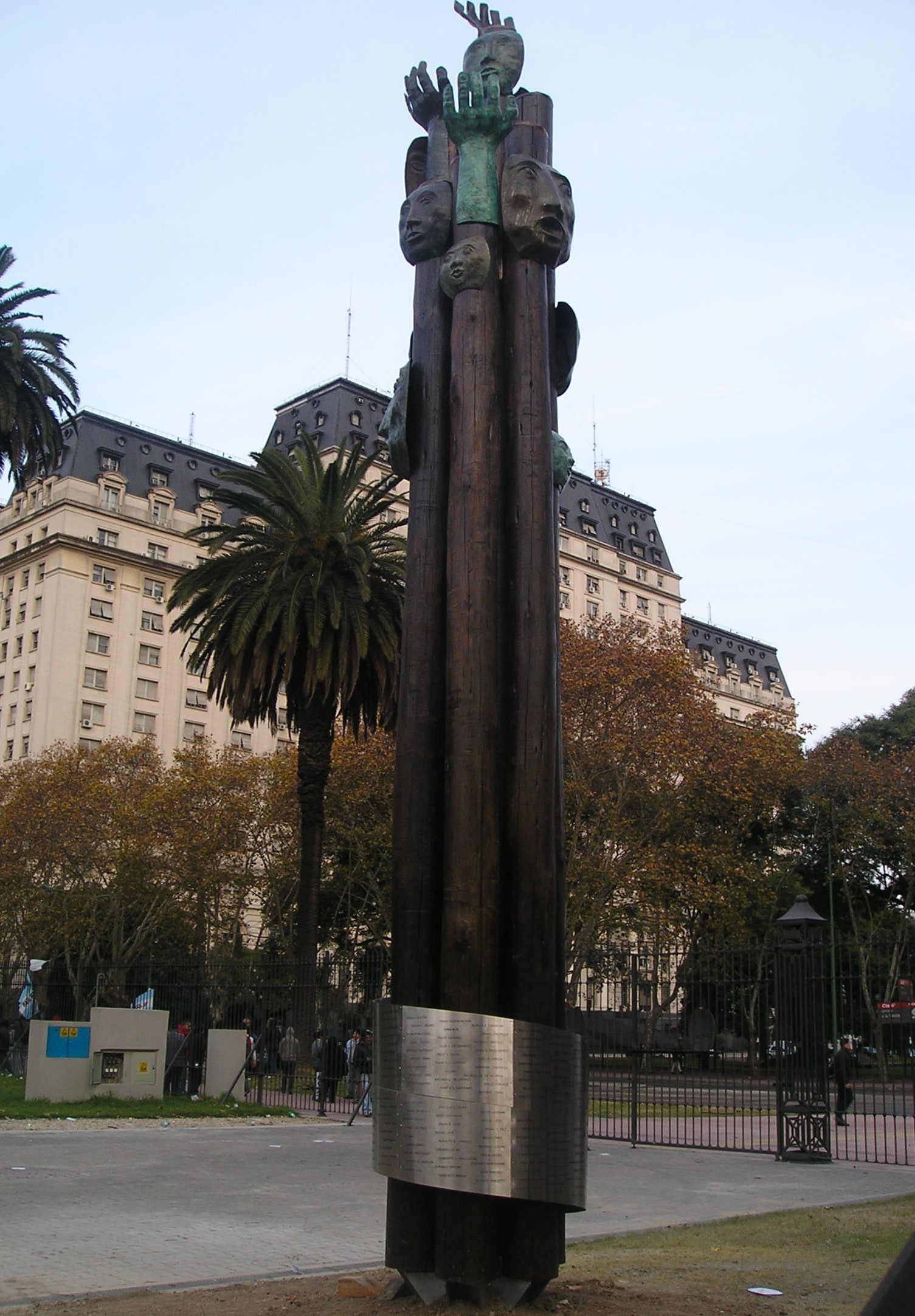
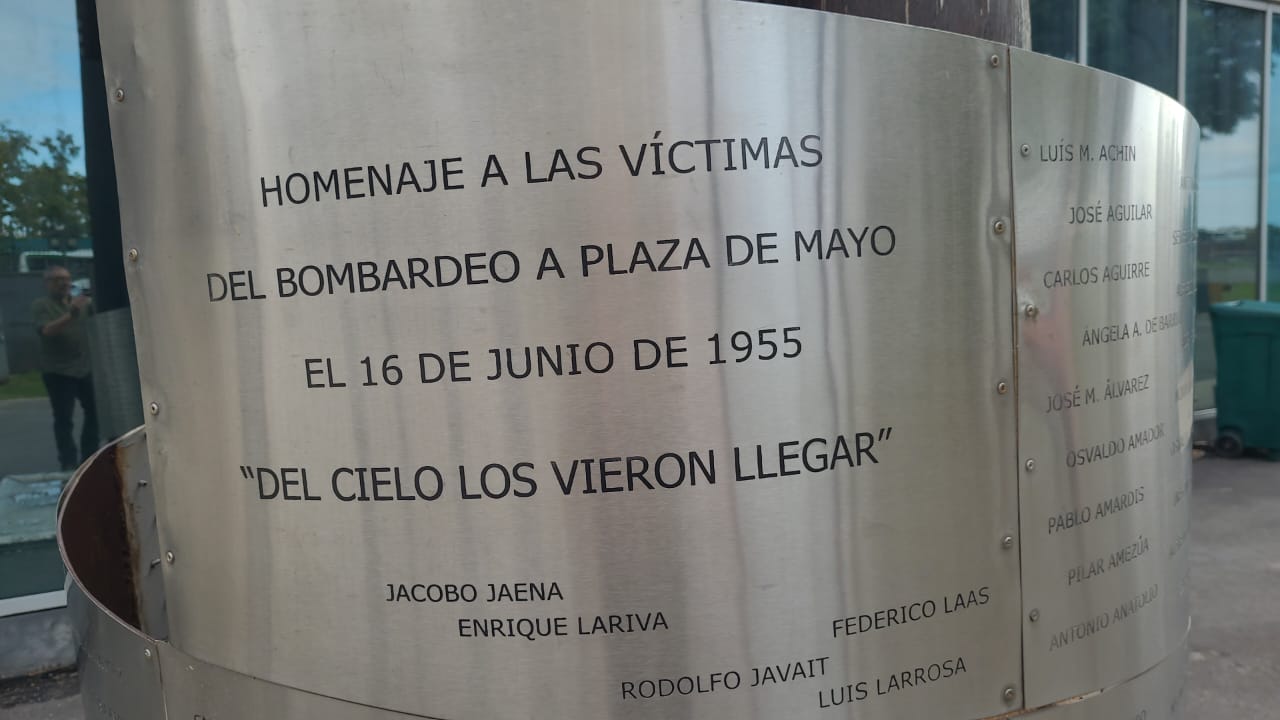
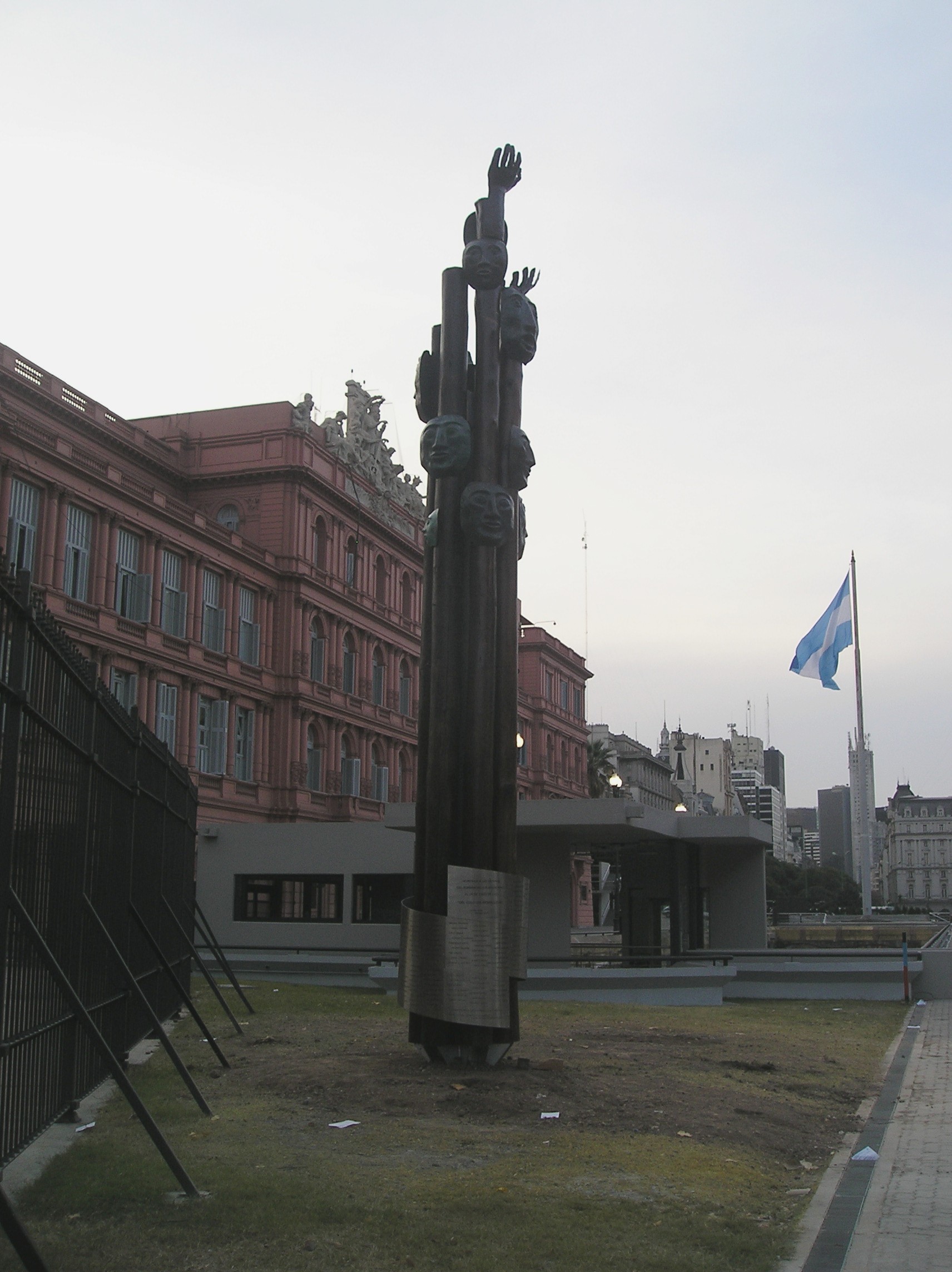
Links of interest
El Bombardeo de Plaza de Mayo - 16 de junio de 1955 | Argentina.gob.ar
Dos proyectos de ley y un memorial de las víctimas del bombardeo a Plaza de Mayo Fernando Bulggiani
NARRAR LOS BOMBARDEOS DEL 55 HOY: ARTE, POLÍTICA Y DERECHOS HUMANOS EN ARGENTINA
Bombardeo del 16 de junio de 1955 : edición revisada
